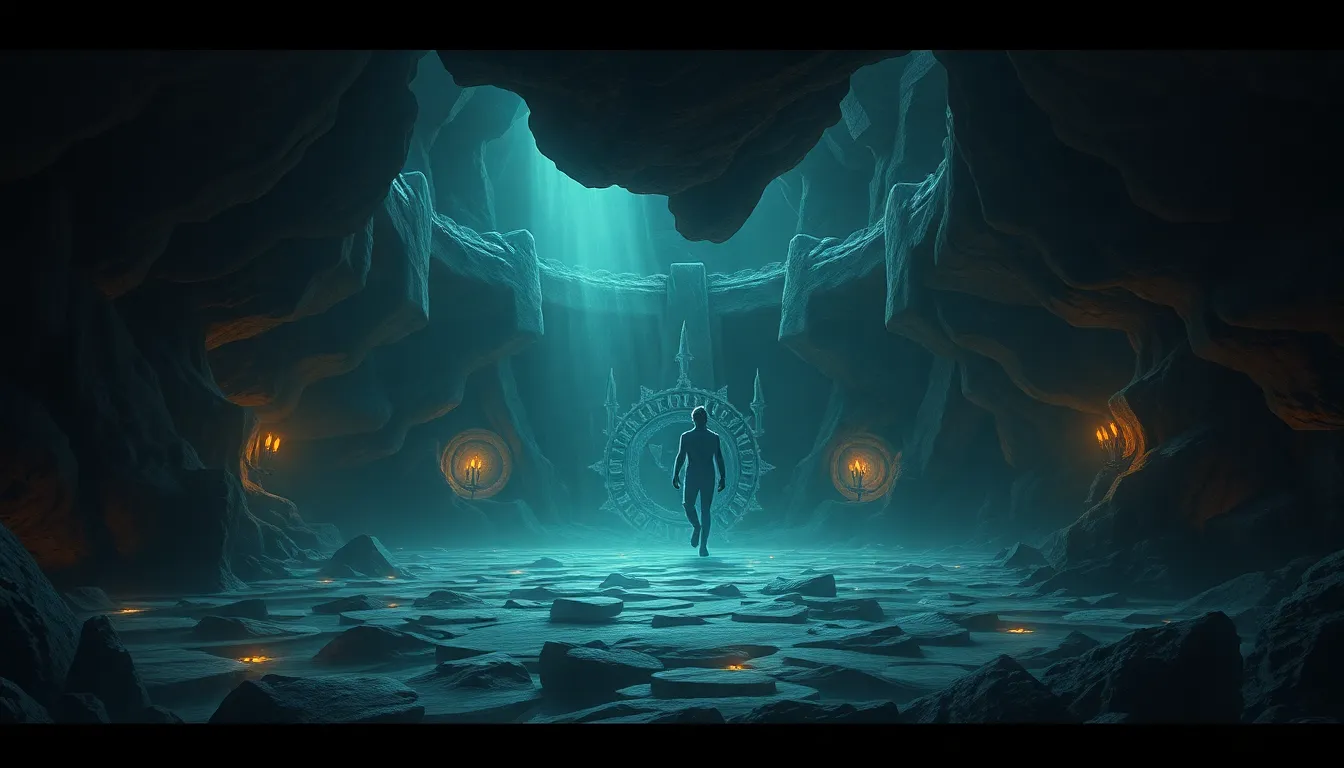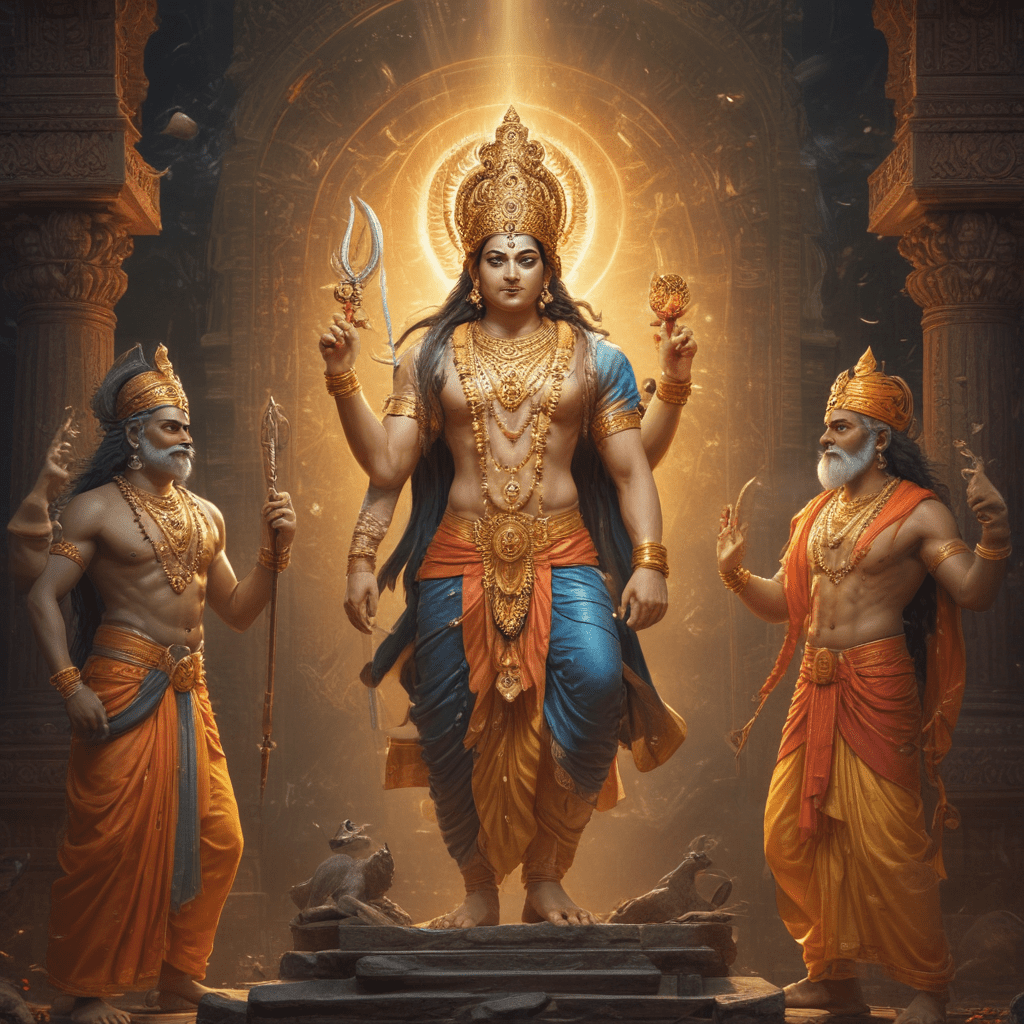The Underworld: Myths That Explore the Depths of Human Emotion
I. Introduction
The concept of the Underworld is a prevalent theme in various mythologies around the world, serving as a symbolic representation of the afterlife, a realm of the dead, and a space where souls undergo judgment and transformation. In many cultures, the Underworld embodies the collective fears, hopes, and emotional struggles of humanity.
Understanding the Underworld in mythology not only provides insights into ancient beliefs but also helps us explore complex human emotions such as fear, love, loss, and transformation. This article will delve into the various representations of the Underworld across cultures, its psychological implications, and its significance in contemporary interpretations.
The structure of this article will take us through a comparative analysis of Underworld myths, an exploration of human emotions reflected in these narratives, and an examination of modern adaptations that continue to resonate with audiences today.
II. The Concept of the Underworld Across Cultures
A. Comparative analysis of underworld myths from different cultures
Underworld myths are rich in diversity, with each culture presenting unique interpretations of what lies beneath the surface of life. Here are three prominent examples:
- Greek: Hades and the River Styx
In Greek mythology, Hades is the realm of the dead, ruled by the god Hades. Souls are ferried across the River Styx by Charon, the boatman. This journey symbolizes the passage from life to death and the inevitability of mortality. - Egyptian: Duat and the Judgment of Souls
The ancient Egyptians believed in Duat, the Underworld where souls are judged by Osiris. The “Weighing of the Heart” ceremony determines a soul’s fate, reflecting the moral weight of one’s actions during life. - Mesopotamian: The Underworld of Erishkigal
In Mesopotamian mythology, the Underworld is ruled by the goddess Erishkigal. It is depicted as a dreary place where the dead exist in a shadowy state, emphasizing the theme of isolation and despair.
B. Common themes and variations in the portrayal of the Underworld
Despite the differences, several common themes emerge across these myths:
- The journey of the soul after death
- The judgment and consequences of one’s actions
- The presence of deities or guides to assist souls
- The emotional states of fear, isolation, and longing
III. The Underworld as a Reflection of Human Fear and Anxiety
A. Exploration of death and the unknown
The Underworld often symbolizes humanity’s deepest fears regarding death and the unknown. Myths surrounding the Underworld confront us with the reality of mortality, serving as a reminder of our finite existence.
B. Myths illustrating the fear of isolation and despair
Many Underworld narratives highlight the theme of isolation. For instance, the souls trapped in Hades often yearn for their former lives, emphasizing the emotional anguish associated with loss and separation.
C. The role of the Underworld in confronting mortality
By engaging with these myths, individuals can confront their own fears regarding death, ultimately leading to personal growth and acceptance of life’s impermanence.
IV. Love and Loss: The Underworld’s Emotional Landscape
A. Mythological narratives of lost love and longing
Love and loss are central themes in many Underworld myths, often expressed through poignant narratives:
- Orpheus and Eurydice: Orpheus descends into the Underworld to retrieve his beloved Eurydice, showcasing the power of love and the pain of loss.
- Inanna and Dumuzid: Inanna’s journey to the Underworld reflects themes of love, longing, and the cycle of life and death.
B. The journey to the Underworld as a metaphor for mourning
These mythological journeys serve as metaphors for the mourning process, illustrating how love transcends even the boundaries of life and death.
V. The Underworld as a Place of Transformation
A. Myths focusing on personal growth and redemption
The Underworld is not merely a place of despair; it also serves as a site of transformation. Many heroes undergo trials that lead to personal growth and redemption.
B. The idea of trials and tribulations in the Underworld
These trials often reflect the inner struggles of individuals as they confront their fears and desires, ultimately emerging stronger and wiser.
C. Case studies: The hero’s journey through the Underworld
Famous examples include:
- Hercules’ twelve labors, which often required him to venture into the Underworld.
- The epic of Gilgamesh, where Gilgamesh seeks immortality and learns about the nature of life and death.
VI. The Role of Deities and Guides in Underworld Myths
A. Examination of figures like Charon, Hades, and Persephone
Deities and guides play crucial roles in Underworld myths, acting as intermediaries between the living and the dead.
B. The psychological impact of divine intervention in human emotions
The presence of these figures often reflects the human need for guidance and support during times of emotional turmoil.
C. The significance of guides in navigating emotional turmoil
These guides symbolize the wisdom and understanding necessary to navigate the complexities of grief, love, and transformation.
VII. Symbolism and Imagery in Underworld Myths
A. Analysis of common symbols (e.g., darkness, water, fire)
Underworld myths are rich in symbolism, with elements such as darkness, water, and fire representing complex emotional states:
- Darkness: Often symbolizes fear, the unknown, and the subconscious.
- Water: Represents the flow of life, emotions, and the passage between realms.
- Fire: Signifies transformation, purification, and the intensity of emotions.
B. How these symbols convey complex emotional states
These symbols serve to convey the intricacies of human emotions, allowing individuals to connect with their inner experiences.
C. The evolution of imagery in contemporary interpretations
Modern adaptations of Underworld myths often reinterpret these symbols, reflecting contemporary societal fears and emotional struggles.
VIII. Modern Adaptations and Interpretations of Underworld Myths
A. Literature and art inspired by ancient myths
Many contemporary works of literature and art draw inspiration from ancient Underworld myths, reimagining these narratives to explore modern themes of loss, love, and transformation.
B. The Underworld in film and popular culture
Films like “Hercules” and “The Nightmare Before Christmas” showcase the Underworld’s influence in popular culture, blending traditional myths with contemporary storytelling.
C. Reflections of contemporary human emotions in these adaptations
These adaptations often reflect modern human emotions, allowing audiences to engage with timeless themes in relatable ways.
IX. Psychological Perspectives on Underworld Myths
A. Jungian analysis of the Underworld as the unconscious
From a psychological perspective, the Underworld can be viewed as a representation of the unconscious mind, where repressed emotions and fears reside. Jungian analysis suggests that confronting these aspects of ourselves is crucial for personal growth.
By exploring the depths of the Underworld, individuals can engage with their inner demons, leading to a deeper understanding of their emotions and the transformative power of acceptance and healing.



